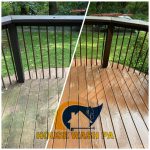Optimization for On-Page SEO
Checklist to Improve Your SEO in 2024: Want your pages to rank high on Google? You won’t be able to achieve that if you don’t know where or how to begin with on-page SEO – and with each Google update, this pillar of SEO becomes more complicated.
To keep you updated on the best and most relevant practices for this element of your website, I’ve created an on-page SEO checklist for 2024.
On-page SEO Factors
Simply put, on-page SEO is all about optimising your website for the pages that make up it. When done correctly, tweaking specific components of your sites might cause them to rise swiftly in the rankings. These elements comprise almost everything you see on your website, including title tags, headers and photos.
Identify Your Target keywords.
This is where all SEO efforts should begin. Determine the core keywords for which you want each page to rank.
From there, you may use keyword research to extend into popular phrases, inquiries, and related words that people use to find pages similar to yours.
Key Features of Keyword Optimisation:
Investigating Keywords Locating the appropriate search terms used by your intended audience.
Keyword Placement: Use keywords appropriately in titles, headings, the opening paragraph, and throughout the text.
Searcher Intent is understanding why someone is searching, whether to obtain information, make a purchase, or do something else.
Effective keyword optimisation enables you to develop pages that best match user intent. This increases your chances of ranking high for your target keywords.
High-Quality Content Creation
Quality content is the foundation of on-page SEO. It is, after all, core to Google’s selling point: it is the go-to site for answers to your inquiries. This is why Google periodically distributes Helpful Content Updates.
Your material must match Google’s quality guidelines to rank at the top. It must also be authoritative, valuable to the reader, and fulfil the promises made in your meta tags and headings.
What Makes Quality Content
Originality: Your work must be distinctive and provide new ideas.
Relevancy: It should be consistent with your target user’s intent and updated frequently.
Engagement: Your content should entice consumers to spend time on your website and interact with your services.
Creating content that exceeds user expectations can significantly improve your SEO by directly affecting user engagement metrics and increasing your site’s trustworthiness.
URL Structure:
URLs are a ranking component and improve the user experience when structured logically.
Characteristics of an Effective URL Structure:
A URL should be concise and descriptive of your page’s content—no stop words.
Term Inclusion: A relevant term can improve a URL’s performance.
Use Hyphens Instead of Underscores: Hyphens are commonly used to separate words.
A clean URL helps consumers and search engines understand the page’s content before they arrive.
Title Tag and Headings
I find that particular techniques for these two elements impact a page’s SEO the most.
Best Practices for Title Tag and Heading Optimisation:
Use a Keyword-First Approach: Place keywords first in your title tag and use as few stop words as feasible.
Keep it Simple: Title tags should be short to ensure the total tag appears in the SERPs.
Same Keyword, Different Phrase: Use the same keyword in the title tag and heading 1. However, use distinct phrasing or vocabulary for each.
Insert Related Keywords: Use this for headings 2, 3, and so forth, wherever it makes sense.
Use different title tags and headings for each page to avoid duplicates.
Meta Tag Enhancement
Meta tags, such as the meta description, provide a brief pitch to users on search engine results pages. Other meta tags, such as your picture alt text and links, provide valuable context for the user and the crawlbot.
Tips for Enhanced Meta Tags:
Compelling Copy: Create title tags and meta descriptions that appropriately summarise the page content and encourage clicks.
Keyword Usage: Use target and related keywords effectively in your meta descriptions while staying inside the restriction.
Each page’s meta tags should be unique.
Be Descriptive: Your picture alt text should include a relevant keyword and adequately describe what is shown in the image.
Include internal and external links. Semantic search implies that Google can use the links on your pages to understand their content better.
Always include beneficial internal connections and only external links from reputable websites.
Use the Noindex Robots Meta Tag. This will prevent pages with thin content, little value, and no intent from appearing in the SERPs.
Use: rel=”canonical” Use the Link Tag for any duplicate pages on your website. This allows you to decide which version of the page is indexed and ranked for your chosen keywords.
Set your Open Graph Meta Tags. This will optimise how your pages appear when shared on social media.
Set your Viewport Meta Tag: This determines how your pages are scaled and presented across various devices and platforms, which is critical for user experience.
Take advantage of this step on your on-page SEO checklist to maximise your SEO efforts. Minor adjustments here might add up to a big picture.
Well-written meta tags can raise click-through rates, increase your organic and image search presence, improve user experience, and disperse link equity throughout your sites. All of this contributes to your page’s ranking.
Internal Linking
Internal linking helps search engines find new pages and spreads link equity throughout your site. Always provide a link to your website’s pillar material or other valuable information.
Advantages of Strategic Internal Linking:
Navigation: They direct viewers to other relevant pages on your website.
Page Authority: Anchor text can help explain what the linked-to page is about, which can help rank for specific keywords.
User Time on Site: Providing relevant connections can keep visitors on your site longer.
Good internal linking can dramatically enhance engagement rates and help to establish a robust site design.
User Experience (UX
User experience influences on-page SEO because search engines prefer websites with excellent user experience.
UX Factors to Consider in Website Design:
Mobile-Friendliness: The site must work well on all devices, particularly mobile-view, as most Google users use their phones.
Ease of Use: The website’s layout should be navigable and logical. Navigation bars and other menus should be simple and prioritise the most important sites on your website.
Page Speed: To lower bounce rates, pages should load rapidly.
Sites that provide a superior user experience will dominate search engine results pages.
Mastering this pillar of SEO is critical for getting good Google rankings and staying current with evolving best practices. However, with each update, what works best varies.
The post Checklist To Improve Your SEO In 2024 appeared first on Ezi Gold.
The Article Checklist To Improve Your SEO In 2024 Was Found On https://limitsofstrategy.com
The Article Checklist To Improve Your SEO In 2024 First Appeared ON
: https://ad4sc.com




